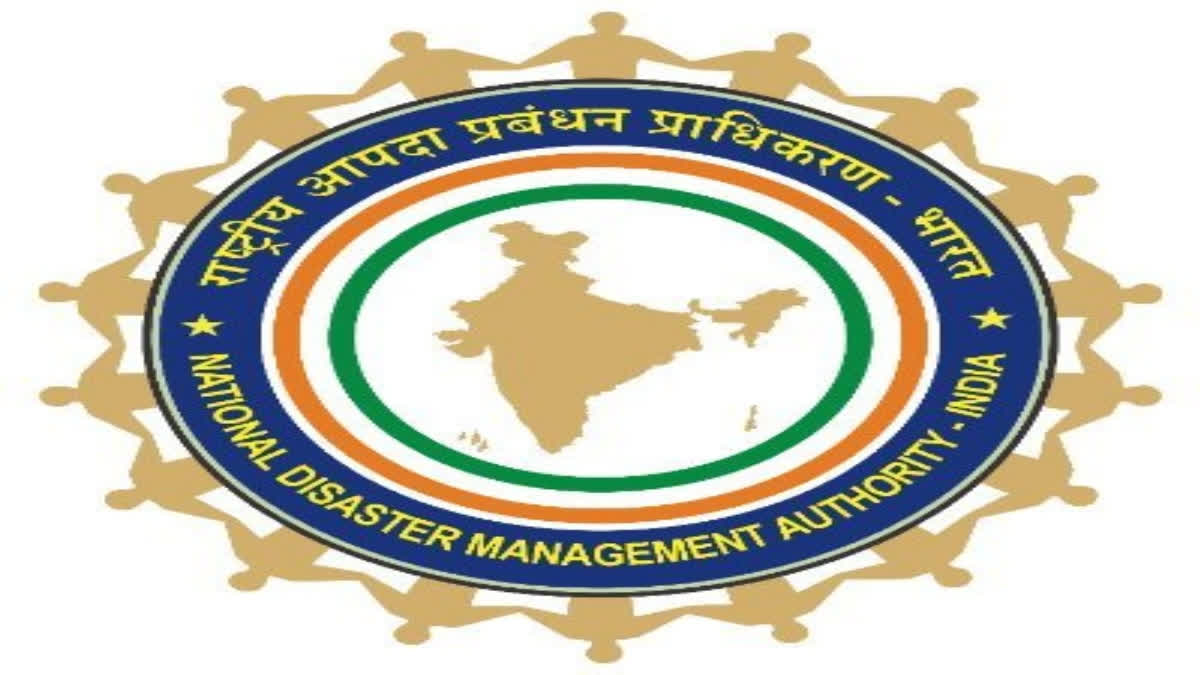Hyderabad: The National Disaster Management Authority (NDMA) is the apex statutory body for disaster management in India. The NDMA was formally constituted on 27th September 2006, in accordance with the Disaster Management Act, 2005 with the Prime Minister as its Chairperson and nine other members, and one such member to be designated as Vice-Chairperson.
Vision
"To build a safer and disaster resilient India by a holistic, pro-active, technology-driven and sustainable development strategy that involves all stakeholders and fosters a culture of prevention, preparedness and mitigation."
The Logo Story
The NDMA logo reflects the aspirations of this national vision, of empowering all stakeholders to improve the effectiveness of disaster management in India. The map of India, embossed in gold, in the middle of the logo, circumscribed by the national Tricolor of Saffron, White and Green represents the aspiration to contain the potential threat of natural and man-made disasters through capacity development of all stakeholders.
The outer circle is a golden ring of the partnership of all stakeholders, whose hand-holding is an expression of their solidarity to supplement the efforts of the Government. NDMA in the inner circle in tranquil blue integrates the entire process by empowering all stakeholders at the local, district, state and national levels. NDMA will catalyse this community empowerment through institutional capacity development, strengthened public awareness and community resilience by mainstreaming disaster management in India
Functions and Responsibilities of NDMA
NDMA has the following responsibilities:-
- Lay down policies on disaster management
- Approve the National Plan
- Approve plans prepared by the Ministries or Departments of the Government of India in accordance with the National Plan
- Lay down guidelines to be followed by the State Authorities in drawing up the State Plan
- Lay down guidelines to be followed by the different Ministries or Departments of the Government of India for the Purpose of integrating the measures for the prevention of disaster or the mitigation of its effects in their development plans and projects
- Coordinate the enforcement and implementation of the policy and plans for disaster management
- Recommend provision of funds for the purpose of mitigation
- Provide such support to other countries affected by major disasters as may be determined by the Central Government
- Take such other measures for the prevention of disaster, or the mitigation, or preparedness and capacity building for dealing with threatening disaster situations or disasters as it may be considered necessary
- Lay down broad policies and guidelines for the functioning of the National Institute of Disaster Management
Formulation of State Disaster Management Authority
Headed by the Chief Minister of the respective state, the State Disaster Management Authority (SDMA) is responsible for coordinating the response to disasters and reducing risks. All measures for mitigation, preparedness, response, and recovery are undertaken under the guidance and supervision of the Authority. The SDMA approves the State Disaster Management Plan and District Disaster Management Plans in accordance with the guidelines laid down by the National Disaster Management Authority.
District Disaster Management Authority (DDMA)
The District Magistrate/ District Collector or Deputy Commissioner heads the Authority as Chairperson besides an elected representative of the local authority as Co-Chairperson except in the tribal areas where the Chief Executive Member of the District Council of Autonomous District is designated as Co-Chairperson. The District Authority is responsible for planning, coordination and implementation of disaster management and to take such measures for disaster management as provided in the guidelines.
Major Success in Disaster Management
- Success in implementing a robust warning and first responder system which is benefiting not only India but also neighboring countries
- NDMA has reduced the loss of lives and property due to cyclone by about 98%
- NDMA achieved a significant reduction in heat wave-related mortality
- The Disaster Mitra Scheme has been implemented in 350 multi-risk disaster-prone districts
- NDMA has a goal to train more than one lakh young volunteers. All of them will be provided life insurance by the government
- Common Alerting Protocol(C.A.P) was launched in March 2021 with an outlay of Rs 350 crore to provide geographically based alerts through mobile phones regarding emergencies /disasters.
- Dial 122 Emergency Response Support System (ERSS) was approved with an outlay of Rs 41 crore for disaster emergencies
